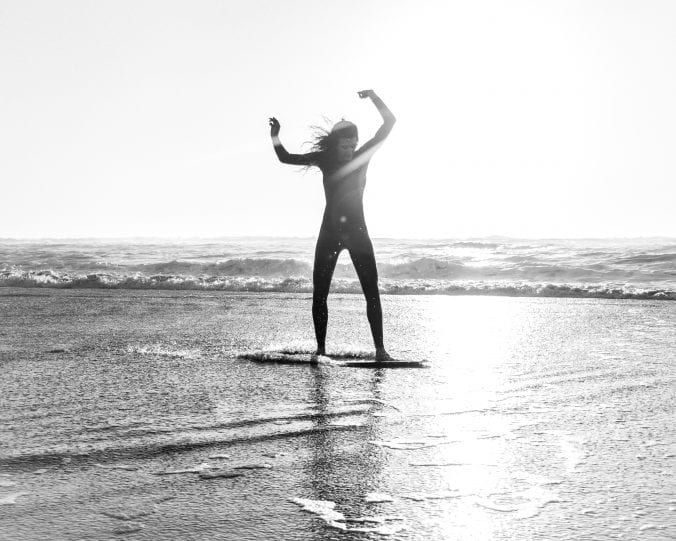Ailsa Harvey
Skimboarding is a board sport which involves gliding along the water’s surface while standing on a board. A skimboard is smaller than a surfboard and has no fins.
In skimboarding competitions, competitors ride out towards the breaking waves, and turn to ride the wave back to shore. Wave-riding skimboarders perform a range of different manoeuvres on the water surface and in the air to gain points. In order to ride out to the breaking waves, the rider needs to be travelling with as much speed as possible to continue skimming in the deeper water. To do this they need to run fast on the beach before jumping onto the board.
“Flat-land” skimboarders stay on the thin wash of water from previous waves. The tricks they perform are derived from skateboarding. These tricks include ‘ollies’ (jumping in the air) and ‘shove-its’ (turning 180 degrees).
The sport involves good balance, hand-eye coordination and technique, allowing little room for mistake.
The main dangers that skimboarders face are injuries from falling, due to the shallow water required, and being taken out to sea by riptides. The latter is of main concern to wave-riding skimmers, who are advised to check tide charts or ask locals about the tides and swells. Riptides can be very strong and carry riders out to sea quickly. There have been a few recorded deaths due to this.
Boy skimboarding in South Wales – Video Credit: Ailsa Harvey
Did you know…
- Lifeguards from Southern California invented skimboarding when they wanted to surf the waves that were too shallow for a surfboard.
- When publications such as Skim Online (1994) and SKIM Magazine (1999) emerged, they helped to inform the skimming community and encouraged the sport to grow globally.
- The first ever inland skimboard competition took place in 1985. It was arranged by GoSkate skate shop at a skimming location called Rio, along the American River in Sacramento, California.
What do you think of skimboarding? Do you skim? Comment and let us know your story!



Leave a Reply